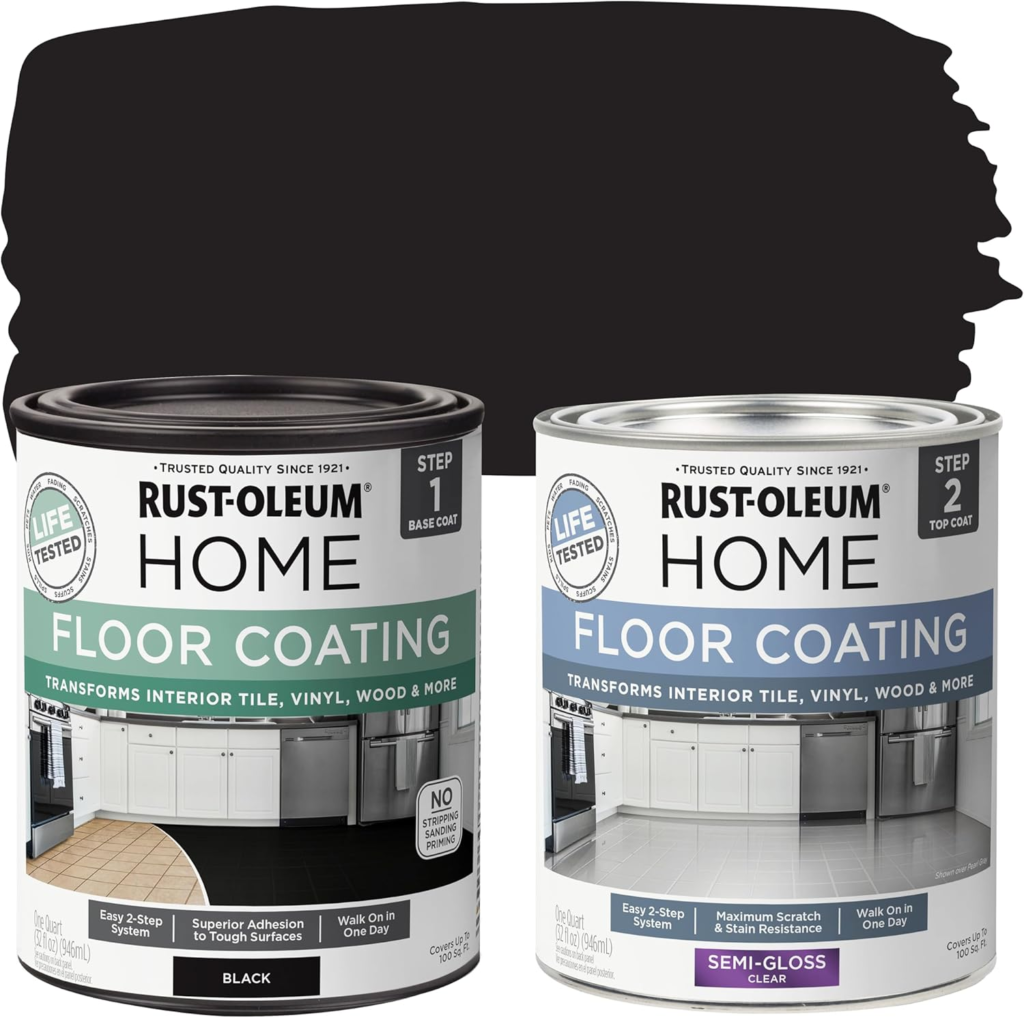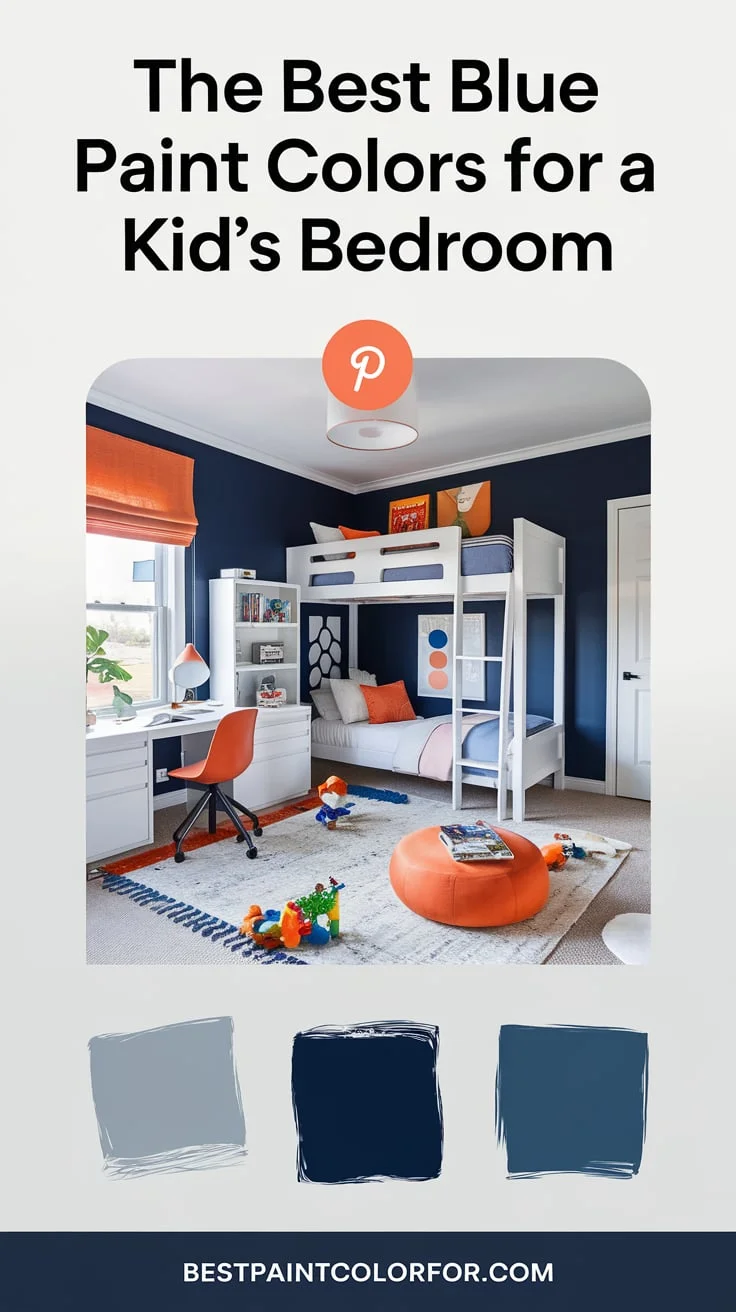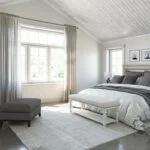Introduction: Why Blue is a Perfect Choice for a Kid’s Room
When choosing the perfect paint color for a child’s bedroom, blue often stands as a favorite among parents and designers alike. It’s a hue synonymous with serenity, creativity, and a touch of magic that can spark a child’s imagination. From creating a tranquil sleeping sanctuary to a vibrant playhouse, blue offers an unparalleled versatility that fits into various themes and moods. This article delves into why blue reigns supreme for kids’ spaces and explores the myriad ways you can utilize this timeless color.
Understanding the Psychology of Blue: Calm, Confidence, and Creativity
Blue is not just any color; it’s a powerhouse of psychological benefits. Universally associated with calm and tranquility, blue can transform a room into a peaceful haven where kids feel secure and relaxed. The color directly impacts the mind, inducing a sense of calmness and clarity. Confidence also stems from its dependable nature, often equated with stability and trustworthiness. Additionally, blue stimulates creativity, providing an imaginative springboard for young minds to explore, draw, build, and dream.
Choosing the Right Shade: How Different Tones of Blue Affect Mood
When diving into the realm of blues, it’s crucial to understand that each shade carries its own unique emotional influence. Light blues evoke feelings of peace and freedom, reminiscent of sky and water, while dark blues instill a sense of depth and introspection. Bright blues can energize a room, fostering an environment of excitement and dynamism. The key is to match the shade with the atmosphere you wish to create within the child’s room, from relaxing retreats to places bustling with playful energy.
Classic vs. Trendy Blues: Which is Better for Longevity?
Deciding between classic and trendy blue hues requires looking into longevity and personal preference. Classic blues, like sky blue or navy, offer an eternal charm that withstands fleeting fashions, effortlessly adapting to growing children and evolving tastes. On the other hand, trendy blues, such as teal or electric blue, inject modern freshness into the space but may require more frequent updates to keep pace with changing trends. Balancing these factors will help ensure your choice stands the test of time.
Light Blues for a Serene, Calming Atmosphere
Soft shades of blue like powder blue or baby blue can transform a child’s bedroom into a blissful oasis. These colors mirror the tranquility of the sky and sea, creating a serene environment conducive to rest and relaxation. Light blue walls paired with white or soft grey furniture can enhance the soothing vibe, making the room a perfect sanctuary for sleeping and unwinding after long days of learning and play.

Pro Grade Paint Roller Kit, Brush & Roller for Professionals & Homeowners
Perfect for smooth finishes on your interior walls. Ideal for home improvement enthusiasts!
Buy Now on AmazonBold and Bright Blues for an Energetic, Playful Vibe
For parents looking to infuse their child’s room with joy and exuberance, bold blues such as cobalt or electric blue provide a vibrant solution. These bright hues invigorate the space, making it an ideal setting for play and creativity. Combined with playful decor and colorful accents, bold blues can help create a lively environment where children can expand their imagination and enjoy active playtimes.
Dusty Blues: A Subtle Choice for a Timeless Look
Dusty or muted blues, like slate or denim, offer a timeless, subtle look that brings sophistication to a child’s bedroom without overwhelming the space. These shades provide a vintage charm, fitting seamlessly into various decor styles, from rustic to contemporary. Dusty blues can serve as a flawless backdrop for decor in muted tones, natural woods, and neutral-colored furnishings, creating a balanced, cohesive design that will age gracefully with your child.
Nautical Themes: Combining Navy Blues with Whites for a Seaside Escape
There’s an enduring allure in nautical-themed bedrooms, where navy blue and white come together to evoke a seaside retreat. This classic combination can be accentuated with maritime decor such as sailboats, anchors, and starfish. Stripes and patterns in navy and white can be creatively used on walls, rugs, or bed linens to bring the fresh, breezy feel of the ocean into the room. Such themes not only appeal to children but also bring an element of sophisticated adventure into the space.
Aqua and Teal: Vibrant Blues for an Ocean-Inspired Room
Aqua and teal represent vibrant, modern iterations of blue that captivate with their fresh, invigorating appeal. Ideal for ocean-themed rooms, these shades evoke the beauty of tropical waters and bring a sense of enthusiasm and vitality to the space. Pair them with beach-inspired elements, like seashell decorations, fish motifs, and sandy accents, to create a lively seaside paradise. Aqua and teal can inspire both relaxation and creativity, striking a perfect balance for a child’s multifaceted needs.

Rust-Oleum 367605 Home Interior Floor Coating Kit, Semi-Gloss Black
Ideal for updating outdated flooring at a fraction of the cost of replacement and adheres without stripping, sanding or priming.
Buy Now on AmazonCombining Blues with Other Colors: Striking the Perfect Balance
The beauty of blue lies in its versatility, which allows it to harmonize splendidly with a multitude of colors. When combined with yellow, it brings a sunny, cheerful feel to the room; paired with green, it can create a refreshing, natural vibe. Blue and pink together offer a beautiful, gender-neutral palette that appeals to many kids. Additionally, combining blue with neutrals like white, beige, or grey maintains a sophisticated and calming ambiance. Mixing and matching these hues will enable a perfectly balanced, visually captivating space.
The Best Blue Paint Colors from Top Brands: Benjamin Moore, Sherwin-Williams, and More
Several paint brands offer exceptional blue shades perfect for your child’s bedroom. Benjamin Moore’s “Wythe Blue” and “Breath of Fresh Air” exude calmness and serenity, perfect for tranquil settings. Sherwin-Williams’ “Regale Blue” offers a rich, dramatic affair, while their “Cloudless” provides a bright, breezy feel. Other notable mentions include Farrow & Ball’s “Light Blue” and Behr’s “Oceanic Climate,” each offering unique, beautiful tones for creating the ideal atmosphere.
Accent Walls: Using Blue as a Bold Focal Point
Blue can be employed effectively as an accent wall, becoming a striking focal point in your child’s bedroom. A deep navy or bright turquoise wall can provide a backdrop for the bed, drawing attention and adding depth to the space. Accent walls allow for experimentation with bold shades without overwhelming the room, creating a dynamic visual interest. This approach works exceptionally well in rooms where the remaining walls are painted in softer, neutral tones, balancing boldness with subtlety.
Complementing Blue with Furniture and Decor: Creating a Cohesive Design
Choosing furniture and decor to complement blue walls is crucial for creating a cohesive, stylish design. White furniture stands out beautifully against blue backgrounds, adding a clean and fresh feel. Wooden furniture in either dark or light tones can add warmth and texture, enhancing the room’s overall aesthetic. Incorporate blue into decor elements like curtains, rugs, and bedding for a harmonious touch. Accents in contrasting colors like yellow, orange, or coral can inject a pop of vibrancy, completing the room’s look.
Using Blue in Gender-Neutral Kid’s Bedrooms
Blue’s universal appeal makes it an excellent choice for gender-neutral bedrooms. By selecting shades like teal, aqua, or navy, and pairing them with neutral colors or other bold hues, you create a space that feels inclusive and welcoming. Incorporating diverse decor elements, such as nature themes, animal prints, or abstract patterns, reinforces the gender-neutral vibe, ensuring the room resonates with children of all genders.
How Blue Works in Different Room Sizes: From Cozy Nooks to Spacious Bedrooms
The size of the room can significantly impact how blue tones are perceived. Light blues are ideal for small rooms, as they can create an illusion of space and openness. In contrast, bold and dark blues can bring depth and coziness to larger rooms, making them feel more intimate. For medium-sized rooms, consider using a mix of light and dark blue shades to create visual interest without making the space feel cramped or overly vast. Strategic use of blue, considering the room’s size, ensures a balanced, appealing environment.
Blue Paint Finishes: Matte, Satin, or Gloss for a Kid’s Room?
The finish of blue paint greatly influences the room’s overall feel. Matte finishes are excellent for creating a soft, elegant look; they hide imperfections but may be less durable over time. Satin finishes offer a slight sheen, providing a balance between aesthetics and practicality, often recommended for children’s rooms due to their ease of cleaning. Glossy finishes, though less common for large wall areas, can add a dramatic, polished feel, excellent for accent walls or trim. Selecting the appropriate finish will enhance both the appearance and functionality of the room.
The Role of Lighting: How Natural and Artificial Light Affect Blue Paint
Lighting plays an essential role in how blue paint is perceived. Natural light can magnify the freshness of light blues and soften the intensity of darker hues. In contrast, artificial lighting can alter the shade’s appearance; warm light bulbs may cast a slightly yellow tone over blue walls, while cool lights enhance the true blue or even add a touch of grey. When choosing a blue paint, consider the room’s lighting conditions throughout the day to ensure the hue maintains its desired effect.
Durable and Washable Blue Paints for a Kid-Proof Room
Durability is paramount for a child’s room, and selecting washable blue paints can ensure the walls withstand the wear and tear of everyday adventures. Many paint brands offer kid-friendly, washable options that are resistant to stains and easy to clean with a damp cloth. These paints maintain their color and finish over time, standing resilient against the artistic endeavors, spills, and nicks that come with childhood. Investing in durable, washable options ensures the room stays vibrant and fresh for years to come.
Decorating with Blue: Themes, Patterns, and Textures
Blue’s incredible versatility can be creatively explored through various themes, patterns, and textures. From starry night skies to underwater adventures, blue lays the foundation for countless imaginative themes. Stripes, chevrons, and polka dots can add playful patterns, while textured elements like woven baskets, plush rugs, and soft pillows bring depth and warmth to the space. Combining different design elements with blue creates a rich, multifaceted look that engages and delights children.
Incorporating Personal Touches: How to Make Blue Feel Unique to Your Child
Personalizing a blue-themed bedroom makes the space special and unique for your child. Incorporate their favorite characters, hobbies, and interests through artwork, bed linens, and custom decor. Display their creations on walls or shelves painted in their chosen shade of blue, adding a personal touch that reflects their individuality. Personalization transforms the room into a space where they feel a sense of ownership and comfort, making it truly their own.
Conclusion: Making the Best Choice for Your Child’s Blue Bedroom
Choosing the best blue paint color for your child’s bedroom is an enriching journey that goes beyond mere aesthetics. Understanding the psychological impact of blue, the nuances of different shades, and practical considerations like room size, lighting, and durability ensures you create a space that is visually appealing, comforting, and inspiring. Whether opting for a serene powder blue, a bold electric blue, or a timeless navy, the right choice can transform your child’s bedroom into a haven of comfort, creativity, and joy. With thoughtful selection and creative touches, you’ll craft a blue sanctuary that your child cherishes for years to come.


















